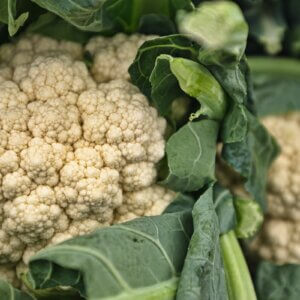Over the last couple of years, modern discussions about meat consumption have reached a strange, sensitive place. Some unequivocally state that all our global problems would be solved if we stopped eating meat and switched to alternative protein sources. Others staunchly defend their right to eat as much meat as they want, while still others try to convert everyone to a plant-based diet. A few retaliate by consuming huge steaks in defiance. Many lament the current cost of meat and wonder how they’ll feed their families without it, or they purchase huge freezers, and fill them to the brim as a measure of economy … even though the meat may end up wasted.

Knowing these sorts of conversations are ongoing, it was a challenge for me to figure out how to present this article on how to use smaller amounts of meat to feed your family. The reason being, I find the nature of the entire meat conversation too out-of-touch and politicized, and I don’t want to throw my hat in with any group. Since so many of the strongly opinionated people online have never actually raised, butchered, or cooked homegrown meat, any harsh, polarizing, or accusing statements ring hollow to this homesteader’s ears.
I personally believe that most Americans eat far too much meat and far too few vegetables, and that the mass-produced meat sold in your nearby grocery store is nutritionally and morally bereft. Yet, I also believe that homegrown and home-butchered meat and wild game are some of the healthiest foods one can eat. And since I raise, tend, and butcher meat from my own animals, it is an extremely precious resource to me. It is something I deeply value offering to my family. It is not a commodity that I would advocate eating with mindless abandon and waste. The meat was an animal I raised, after all.
All that said, I’d like to share a few of our family’s easy recipes and techniques for delicious, healthful meals that can feed four (or more) people with tiny amounts of meat. Whether you’re on a tight budget and concerned about the cost of meat, want to know how to make it stretch, are trying to eat less meat, or likewise see meat as a precious ingredient, I hope this article helps open doors to new meals.
A Perspective Shift

If you’re accustomed to “normal” American amounts of meat being served at the dinner table, these comparatively tiny amounts will take some getting used to. But (as I hope you see), these recipes use meat economically and deliciously without sacrificing flavor or nutrition. Here’s the basic philosophy.
- Consider meat a “spice” (as my husband likes to put it). It’s there to add flavor and nutrition but is not the substance of the dish.
- Meat is best used finely-chopped, diced, or ground to spread it through the dish evenly.
- Vegetables and whole grains make up the bulk of the meal, creating a satisfying amount of food without depending on a huge slab of meat for the eater to feel full
- Don’t be shy about using the butter or olive oil mentioned in the recipes — they add richness that can make vegetables sing.
Turkey and Eggplant Stir-Fry

This simple, weekday dish uses a small amount of ground turkey to add flavor and richness to the stir-fry. The eggplant takes up the role of the “meat.” The lacto-fermented sauerkraut truly elevates the result.
Turkey and Eggplant Ingredients
- 3/4 cup ground turkey
- 1 large eggplant, cubed
- 1 cup sweet peas
- 1 large carrot or parsnip
- 1 onion
- 3 cloves garlic, finely minced
- 1 inch knob of ginger, finely minced
- Spicy lacto-fermented sauerkraut, for serving (optional, but recommended) Here’s a simple recipe that adds carrots, garlic, and ginger to ours in addition to a heaping helping of hot peppers, but it’s the same process
- Brown rice, to serve
Sauce
- 1½ cups water
- 1 tablespoon sugar
- 4 tablespoons soy sauce
- 1 tablespoon black vinegar or rice vinegar
- Tapioca starch
Steps
- Brown the turkey, then set aside.
- Cook the eggplant fully — you can toss it with oil and either air-fry it until crispy/roast it in the oven, or you can cook it in the pan until soft. The treatments yield a slightly different result, but all are tasty. Set aside.
- In the same pan, stir-fry the ginger, garlic, onion, and carrot or parsnip for a few minutes until the onions are translucent and the whole pan is fragrant. Add the eggplant and turkey, and stir quickly.
- Mix the water, sugar, soy sauce, and vinegar and pour over the vegetables. Bring to a boil.
- Shove all the ingredients to the sides of your pan to make a well in the center. Add a tablespoon and a half of tapioca starch, and mix ingredients thoroughly. If the sauce does not thicken, add another teaspoon of starch, then immediately remove from heat as you stir to keep the sauce from breaking down.
- Serve piping hot with rice and lacto-fermented spicy sauerkraut
Crispy Chicken and Broccoli

In this dish, the crispy-fried chicken acts most like a tasty garnish, while the broccoli is really the star of the show. You can substitute lamb or beef, if desired.
Chicken and Broccoli Ingredients
- 1 large chicken thigh
- 3 cups broccoli florets
- 2 large carrots
- 1 large onion
- 1 jalapeno pepper
- 3 cloves garlic
- A 1-inch knob of fresh ginger
- Brown rice, to serve
Breading Mix
- Fresh black pepper
- Salt
- 2 tablespoons tapioca starch
- 2 tablespoons whole wheat flour or finely ground grown rice
Sauce Mix
- 1 cup water
- 4 tablespoons soy sauce
- 1 tablespoon rice vinegar
- 1 tablespoon tapioca starch
- 2 teaspoons raw sugar
- 2 tablespoons sesame seeds, as garnish
- 1 teaspoon honey
Steps
- Cube the chicken thigh into small cubes (it helps if the chicken is half-frozen). Toss chicken in breading mix, then fry in hot oil until done. If you have extra breading mix, toss it over the half-cooked chicken as it fries and it’ll stick to it, creating more crunch and less waste.
- Once the chicken is fully cooked, drizzle honey over the pieces and stir quickly to coat. Remove from heat and sprinkle with sesame seeds. Set aside.
- Add a tablespoon of oil to the pan, and stir-fry all the vegetables until tender (or stir-fry all the vegetables aside from the broccoli, and steam the broccoli separately).
- Pour water over vegetables and bring to a boil. Add soy sauce, vinegar, and sugar and stir.
- Add tapioca starch, mixing until the sauce thickens, then turn off the heat.
- Serve vegetables alongside rice and top with the chicken scattered like croutons.
Everett Family Chili

Nothing will warm you up better than a steaming bowl of this thick chili. Though the cooking time seems long, it is necessary for creamy, digestible beans that won’t bite you back later … if you know what I mean.
Chili Ingredients
- 1 cup dried pink, small red, or pinto beans
- 1/2 cup garbanzo beans
- 1/2 cup lentils
- 1/2 teaspoon baking soda
- 1 cup browned ground meat (turkey, lamb, goat, venison, or beef)
- 2 jalapeno peppers, or whatever peppers the garden’s giving you
- 1 large onion
- 6 cloves garlic
- 1 quart tomato sauce or diced tomatoes or at least 4 cups fresh tomatoes
- 1½ cups roasted and mashed pumpkin (our secret ingredient)
Steps
- The night before, soak all beans in water (at least 8 hours).
- The next day, discard the soaking water, put the beans in your largest pot, cover with water, and bring to a boil
- The boiling water will be frothy. Pour it off, add more cool water, and bring to a boil again (this water change helps with the digestibility of the beans — you’ll thank me later).
- Reduce to a simmer and allow beans to cook for at least two hours, but the longer they can simmer, the better they’ll be.
- Add 1/2 teaspoon of baking soda to the bean broth. It will froth as it neutralizes the naturally occurring acids in the broth.
- Now add the rest of the ingredients to the fully-cooked beans and allow to simmer for at least another hour — though, again, longer is better. We like to make this chili first thing in the morning and enjoy it for dinner.
- Serve with cornbread, shredded cheese, or (as pictured), oven-crisped flatbread chips.
Savory Dinner Crepes

To be honest, the chicken is absolutely unnecessary in this recipe. But if the idea of totally eliminating meat from a meal is something your home isn’t accustomed to, this can be a good gateway meal to show everyone, especially the kids, that it’s deliciously okay for vegetables to be the focus.
I know this is a lot of steps and ingredients, so if that’s intimidating, maybe it’s best to save this recipe for a special brunch.
Crepe Batter Ingredients (12)
- 1 cup cornmeal
- 2 cups whole wheat
- 3 tablespoons tapioca
- 4 eggs
- 1/2 cup yogurt
- 3 tablespoons butter
- Water
- Turmeric
Sauce
- 1½ teaspoons sugar
- 4 tablespoons soy sauce
- 1 tablespoon vinegar
- 1/2 teaspoon cinnamon
- 8 Szechuan peppercorns
- 1 tablespoon grated ginger
- 1 tablespoon minced garlic
- 3 tablespoons Ketchup
- Tapioca starch
Filling
- 1 bell pepper
- 1 zucchini
- 1 onion
- Thyme
- Black pepper
- Salt
- 1 chicken thigh, minced
- 1 carrot
Steps
- Blend all crepe ingredients in a blender. Allow to sit for 10 minutes.
- If necessary, add more water or flour as needed to make crepe batter consistency that of a milkshake.
- Cook all crepes in a hot pan (I like to use a flat cast-iron griddle like this for mine). Stack and set aside.
- Mix all sauce ingredients (except for tapioca starch). Bring to a boil, then allow to simmer for 10 minutes. Once it tastes pleasantly strong, bring it to a boil, turn off the heat, and mix in the tapioca starch until thickened. Set aside.
- Combine all filling ingredients in a skillet, and saute until fragrant and cooked-through.
- Assemble each crepe by placing a spoon of filling in the middle, rolling tightly, cutting in half (on an angle if you’re feeling fancy), and finishing with a drizzle of the sauce.
I hope these homemade recipes have not only piqued your interest in using your resources a little more thoughtfully and (of course), deliciously, but also provided you with great ideas on how to feed a large family with a cup of meat or less. Let us know if you try any of them, or if you, likewise, have any favorite low-meat dinner meal plans of your own.










































What a lifesaver! Do you know how IMPOSSIBLE it is to find recipes online with the dopey algorithms that cannot understand the terms “1/4# beef roast to feed four”?
Then I found your page, substituted our available 1/4# beef roast for your one chicken thigh, and had the most wonderful beef and broccoli meal that more than adequately fed all four of us, using what we already had on hand!
Thank you so much for posting this! (And I LOVE your name!) I’ll be wandering around your site for some time, I’m sure. 🙂